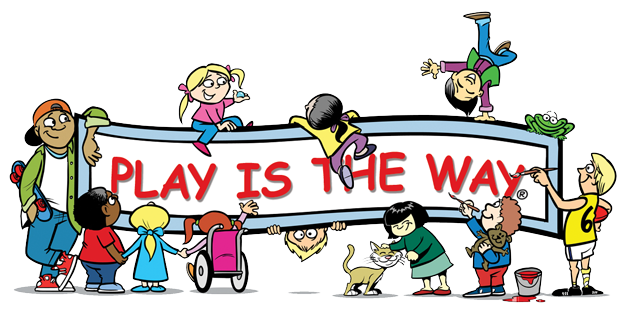
By Wilson McCaskill
The larger the entity to which you can attach yourself the more meaning you feel your life has.
Martin EP Seligman, Ph.d. (The Optimistic Child)
Fostering school loyalty and pride helps students to satisfy a deep seated, if not hard-wired, need to belong.
Being a part of something larger than yourself, a part of something that in some significant way defines you, will amplify your sense of self and afford you perspective, attachment and acceptance.
Children don’t just go to school, they go to a particular and specific school. We don’t ask them if they go to school. In a society where schooling is compulsory the question is redundant. We ask them which school they go to. In fact, this question is one of the earliest questions we ask children in our first meetings with them. It’s as if, by answering the question, they in some way inform us more fully of who they are. It also in some way suggests (be it true or not) something about the parents and the scholastic aspirations they hold for their child.
I think most of us would agree that a child informing us that they attend some private, much respected college elicits a different inner response from us than discovering they are attending a public school in a degraded suburb known for its crime and chaos.
Taking this one step further, I’m sure I’d be hard pressed to find anyone who didn’t think a private school required a more stringent adherence to its dress code than a public school.
Uniforms have for centuries represented belonging, values, traditions and expected codes of conduct. A uniform is a symbol of something beyond the material, stitch work and colours from which it is assembled.
If sports clubs are merely places where people play their chosen sport, then they don’t need a uniform. Opposing teams can simply be identified by playing in universally accepted contrasting colours. Black versus white or yellow versus blue – it matters not because belonging does not matter. The clubs stand for nothing and require nothing more from participants than the use of their skills to achieve the desired outcome of the game.
But try telling a sports team that their uniform is merely a means to avoid playing naked and with no more meaning than beneficial contrast and I dare say you’re in for an argument.
Coaches will remind players of club values and the meaning behind the guernsey before sending them off to pit both skills and strength of character against the opposition.
I don’t imagine the Kiwi netball team would feel quite as fervent about battle with the green and gold if told they were to play in lilac and lace.
Telling a soldier that his uniform serves no purpose other than separating him from the enemy would soon have you offside and appearing somewhat like the enemy.
Like flags, uniforms are representative of the values people believe in and as history has too often proved, are willing to die for.
We all agree that children require guidance and as adults we freely give it. We offer guidance as talk, as actions, as role modelling. But there is also guidance in a uniform. Indeed there is inspiration, hope, strength, and much more in one – provided the uniform has been endowed with qualities, that through daily practise while wearing the uniform, have come to be represented by the uniform.
Can children be proud of going to their particular school? Of course they can.
Can children be loyal to the values of their school? Of course they can.
And if children are proud of their school and loyal to its values, will they inturn want to be identified as belonging to that school? Of course they will.
It takes little to see that a uniform gives children the perfect mechanism to display that sense of belonging and to be seen by others and their peers as the embodiment of their school’s values.
I love sports carnival days when children do all manner of things to exaggerate their belonging and commitment to a particular faction or house.
For a great number of schools, uniform standards have been so eroded (often through parent/student pressure) that simply wearing a shirt – no, not even a shirt – a top of any colour, similar to that of the uniform, is all that is required.
There aren’t many parts to a school uniform and if maintaining adherence to key elements of the uniform is lost, what remains is a sad, almost insulting misrepresentation of the original.
There are schools where footwear is open to interpretation and choice and can range from designer thongs to Doc Martens. Shorts/skirts have (perhaps understandably) simply become a request for the right colour in a style of choice, so long as the skirts aren’t too short and appropriate underwear is worn.
Hats can range from the sun-wise, school issue, broad brimmed type to baseball caps emblazoned with status raising logos, to snappy pork pie hats that shout cool and eye catching difference.
Which leaves the shirt as the last opportunity for uncompromised, unified group identity. And it is here especially, that I urge schools to make a stand.
All schools have an insignia and school motto and it’s on the shirt that it is displayed. Being symbolic, much thought will have gone into the design of the insignia and like all logos it’s meant to convey some pertinent message and meaning that defines the wearer. The motto points to a belief or aspiration common to all who wear it.
In corporate terms, the shirt with its insignia and motto brands the organisation and separates it from others, while affording those who belong to it identity and those who see it an immediate understanding (if only subliminal) of the organisation’s values.
On many occasions, I run the experiment of asking students to avoid looking at their left shoulder and quote their school motto and describe their insignia. To this day I am surprised by how many are unable to do so.
When asked if they have ever discussed the meaning of the insignia and their role in adhering to and upholding of the ideals implied in the motto, few are able to answer in the affirmative.
To relinquish to parents’, students’ and sometimes teachers’ calls for compromise on all elements of a school’s uniform is, in my opinion, akin to wasting the last few precious litres of water simply because a drought appears to be never-ending.
Though schools must change with the times they must be careful to preserve what has benefitted children over the span of time and resist falling to the often-lazy whims of the day.
Let’s go further.
Uniforms are a great leveller. In being the same for all they ask a school population to treat all equally – to see past the illusion of fashion and accessories to the substance of character.
Uniforms ask students to better themselves by genuine self-improvement and not by attention-seeking adjustments of the uniform. They ask students to stand up and be counted where street clothes ask the wearer to stand out and be seen.
It is said that clothes maketh the man and although this cannot be taken as a hard and fast rule, there is some truth in it.
Nightclubs and restaurants have long known that one effective way to ensure the better behaviour of their patrons is to enforce a dress code. It’s a fact that Joe Bloggs is less likely to be offensive and inappropriate when dressed in clothes requiring more thought than singlet, shorts and thongs.
And Joe, who has a penchant for unruly behaviour brings himself into line for the funeral of his friend and shows respect by sitting thoughtfully in shirt, trousers, shoes and tie while listening to the eulogy. Even Joe knows there are times when how you dress matters.
While it can be argued that the wearing of a school uniform, that adheres to certain and specific standards, does not in itself guarantee a more safe school environment, I’d hazard a guess that if I suggested a public school was chaotic and unsafe most of us would more easily imagine a school with disparate and lower standards of dress, than one where the students adhered to the higher demands of a specific uniform.
Try suggesting to the parents of a private, fee paying school that the school uniform can be worn in any manner their children desire and the suggestion would not be seen as progressive or enlightened, but reflective of a loss of standards and ideals.
Yet in some public schools, principals see little point in making a stand when it comes to standards of dress because why have a fight you can’t win and can easily avoid. After all, the parents don’t give a stuff and there are more important things to consider than whether John & Mary have the right shirt and shorts on. Besides, how does that impact on their learning and in what way does the right shirt help John with his spelling?
This is, in my opinion, a defeatist and puerile argument predicated on the notion that a school’s only purpose is to take the path of least resistance to develop the brain of the child at the expense of the whole child.
Sadly, I have seen too many children, too often, take more pride in running onto a sports field in their weekend sports club uniform than in their school uniform publicly displayed on a school excursion.
I have also seen, on numerous occasions, principals scramble to make sure all students are in school uniform looking bright eyed and bushy tailed for the visit of some politician, head of department or VIP. On these occasions there appears no argument. The school must be seen in the best light and the first thing is to ensure that all students are in uniform, and those who fail to be in uniform must promptly be given one for the day.
Is it wrong for a child to be proud of their school and what it stands for? Is it wrong for a child to be proud of what their school has done for them and their peers? Is it right that a school helps a child to define themselves beyond academic capabilities? Is it essential that a school add meaning to a child’s life? I believe it is and if we accept that for the vast majority of Australians, a public school uniform, new or second hand, is within their financial means, then let’s endow each and every uniform with values that will sustain children in every area of their lives.
Let us make it that a uniform stands for something, and ask children to understand what it stands for, and accept that by wearing it they stand for something beyond self-interest, beyond complacency and apathy and beyond the thin veil of fashion and popularity.
Let us make it that a uniform stands for values, character and that extra something that comes not from going to school but proudly belonging to a specific school, to their school – a school whose name and uniform they will remember all their lives and whose uniform will forever stand for something.
Am I asking for too much? I don’t think so. A uniform invites a child to stand up for ideals, for habits of action and reminds them that, “If you stand for nothing, you will fall for anything.”

